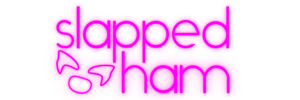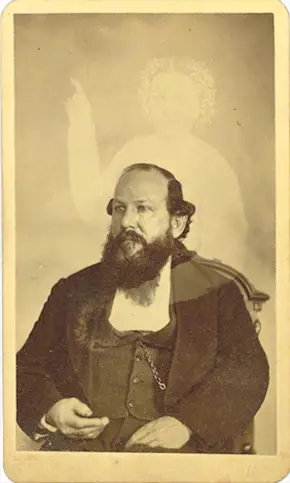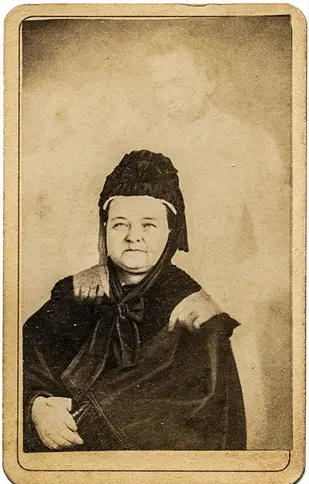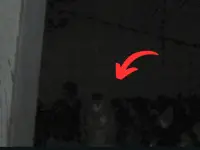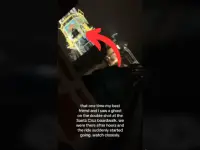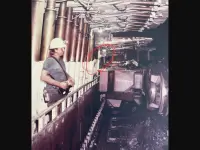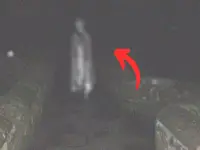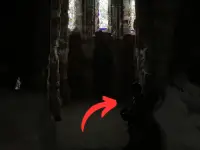This is the eerie history of ghost photography. In today’s world of photoshopping and filters, it’s easy to be skeptical of images that seem to depict spirits lurking in the background. However, that wasn’t always the case. As early as the 1860s, photographers were publicizing and selling ghost photography, and the masses ate it up.
Below, read the uncanny history of how spirit photography came to be and how it gripped the world.
1860: W. Campbell’s Accidental Discovery
The history of ghost photography actually begins one year earlier than many people believe. In 1860, a Jersey City photographer named W. Campbell accidentally became the world’s first spirit photographer.
Campbell was shooting in his studio, just as he would on any other day. However, when he developed the plate he was working on, he noticed an image of a small boy. Campbell was astonished, as he had been completely alone in his studio. He tried repeatedly to replicate the photo but was never able to do so.
Because of the accidental nature of Campbell’s photo, many believers point to it as irrefutable evidence that spirit photography is genuine.
Despite numerous accounts of this photo, there seems to be no copies of it on the internet.
1861: William H. Mumler’s Rise to Fame
Shortly after Campbell’s discovery, another photographer became one of the most well-known names in the world of ghost photography. In 1861, William H. Mumler, a photographer who worked in New York and Boston, inadvertently created a double exposure showing what appeared to be a mysterious figure in a self-portrait he had shot.
Mumler soon realized that there was profit to be made by telling grieving people that he could provide them photographic evidence that their loved ones were still with them. People flocked to his studio, eager to get a piece of the supernatural for themselves.
Mumler’s most famous client was Mary Todd Lincoln. His photo showing her posing with the ghostly figure of a deceased Abraham Lincoln is one of the most famous spirit photos in history.
Mumler’s rise to fame was not without controversy. Many people insisted that his works were forgeries, some even accusing him of breaking into people’s homes to steal photos of deceased relatives in order to produce his photographs. To combat this criticism, Mumler invited Philadelphia physician Dr. Child to observe and study his methods. Dr. Child asserted that he found no evidence of tampering after watching the entire process from start to finish.
Many of Mumler’s supporters claim that while he did produce some fraudulent works, a number of his mysterious photographs are indeed genuine. They assert that when he discovered that he had the ability to photograph spirits, greed motivated him to resort to fraudulent methods to reproduce the results for profit.
1861: Sybill Corbet’s Lord Combermere Photo
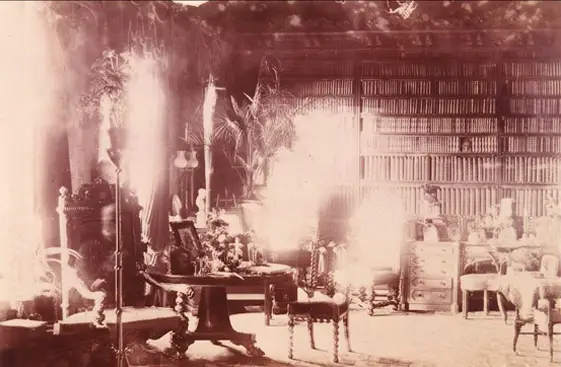
Around the same time that Mumler was beginning his lucrative spirit photography business, another famous ghostly photo came to the public attention.
In December 1861, Lord Combermere, owner of Combermere Abbey in Cheshire, England, passed away. While his family and friends attended his funeral, Sybill Corbet took advantage of the empty house to take a long-exposure photograph of the library. The exposure took a full hour to complete, so she needed an empty house to ensure that no one would walk into the frame.
When Corbet developed the photograph, she was shocked to discover the ghostly image of Lord Combermere himself sitting in one of the library’s chairs when he should have been at his own funeral. Many skeptics allege that a member of the household staff must have entered the library at some point during the exposure and sat in the chair, but every staff member insisted that they had been in attendance at the funeral. Not to mention, this explanation could hardly account for the figure’s distinct resemblance to the lord of the abbey.
1872: Fred A. Hudson’s Forgeries
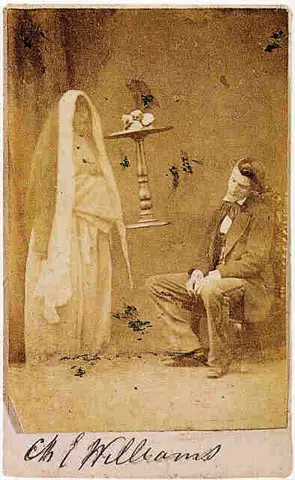
In the 1870s, Britain’s first official ghost photographer came onto the scene. Hoping to gain some of the same wealth and notoriety that Mumler claimed, Hudson began working with medium Georgiana Houghton to photograph clients’ deceased loved ones.
In 1872, a fellow spiritualist by the name of William Henry Harrison proved that Hudson’s works were forgeries. Hudson would premake plates in which he dressed up in ghostly attire and use the plates to create a simple double exposure. Hudson’s forgeries were one of the early setbacks to the legitimacy of this type of spiritualist work.
1874: E. Baguet’s scandal
The scandals of the 1870s continued with French photographer E. Baguet. Baguet was a spirit photographer who came into the spotlight by taking photos of famous people in which ghosts seemed to appear. He was accused of forgery and confessed to using double exposure to create his images.
However, Baguet still had many supporters. His proponents argued that he had been pressured, or perhaps even paid, by church officials to falsely confess. The truth of these claims is still unknown.
The 1870s-1880s: Willaim Stainton Moses’s Ectoplasm Claims
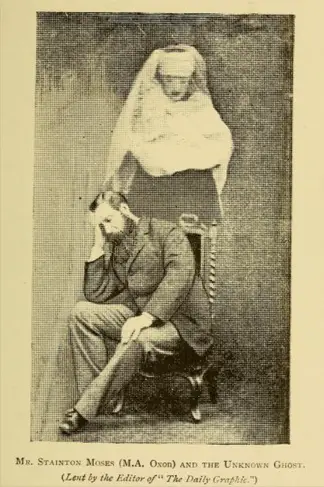
In the 1870s, spiritualists had what could be considered a major victory in the research of Willaim Stainton Moses. Moses was the first to make any sort of claim about how ghost photography worked. He claimed that spirits were composed at least partially of a substance called “ectoplasm” that was largely invisible to the naked eye but could be seen on film. This assertion was one of the earliest instances of supernatural photography stepping into the mainstream, scientific world.
Continue Reading on Next Page:
